Best arranger keyboards 2025: Great instruments for solo keys players
Looking to have a bit of fun as a one-person band? Our experts have rounded-up today's top arranger keyboards
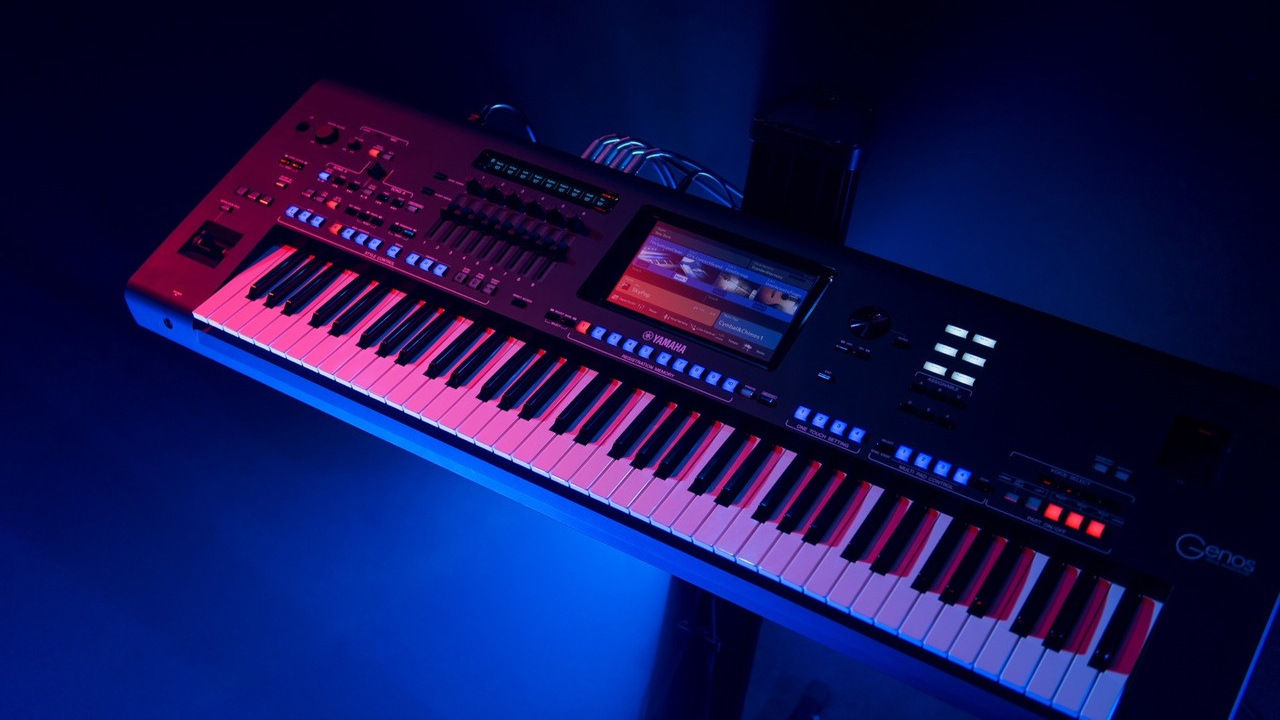
The best arranger keyboards represent the fun, friendly face of keyboard instruments. They're designed to help you out when learning or performing, by accompanying your playing with a helpful band of virtual musicians ready to follow along.
Learning the keyboard can be a daunting prospect – where do you start figuring out how chords, rhythm and melody all work together? Perhaps you’re a songwriter wanting to quickly put together some song demos? Alternatively, maybe you’re a seasoned performer wanting to get started with busking or solo gigs. This is where arranger keyboards really come into their own.
Arranger keyboards can trace their ancestry back to the electric home organs that could often be found in people’s living rooms in the 1970s. These large, dual-manual instruments were designed to provide everything a solo keyboard player needed to perform songs without the need for any other musicians in the room. The accompaniment to your playing would be provided by a built-in rhythm machine and a bassline and chord generator that would follow the notes or chords played by the performer's left hand; this was groundbreaking technology at the time.
Over the years, as the technology and sophistication of these auto accompaniment styles gathered pace, the technology enabled these features to be condensed into smaller, more portable instruments with battery power and built-in speakers that could be set up to perform, one-man band style, practically anywhere. It was Yamaha and Casio who made the first forays into the portable home arranger keyboard market, with the groundbreaking Yamaha PS (PortaSound) series in 1980 and the Casiotone CT-701 in 1981.
These days, the arranger keyboard market is packed with great-sounding, sophisticated keyboards that are brilliant fun for anyone wishing to experiment with performing songs of any type or genre, be it well-loved classics, current pop tunes or your own material that you create on the fly. The backing styles included in today’s range of instruments are finally managing to shake off the cheesy home organ stigma that arranger keyboards have long been associated with, attaining a level of sophistication that can be remarkably impressive. The downside of all this is that the current crop of arranger keyboards can sometimes be a little overcomplicated and difficult to fathom if you’re a beginner – but stick with it and you’ll find that your keyboard has a lot to teach you about how music works.
We're help to help you understand more and to find the best arranger keyboard for you.
Best arranger keyboards: Our top picks
At the entry-level end of the scale, the Casio CT-S300 comes in as our choice for a capable budget arranger keyboard for minimal outlay. You won’t find a cheaper big name branded arranger with velocity-sensitive keys anywhere. It’s lightweight and portable, runs on mains or batteries and has plenty of onboard tones and styles to get you going.
In the big budget stakes, things are a little tougher. The Yamaha Genos has always been the obvious choice for the premium professional money-no-object arranger. With its superb quality sounds and sophisticated arrangement programming, we’d still have no hesitation in plumping for one of these amazing keyboards. However, six years is a long time in the tech business, and outsiders like the brilliant-sounding Ketron Event are catching up fast!
Best arranger keyboards: Product guide
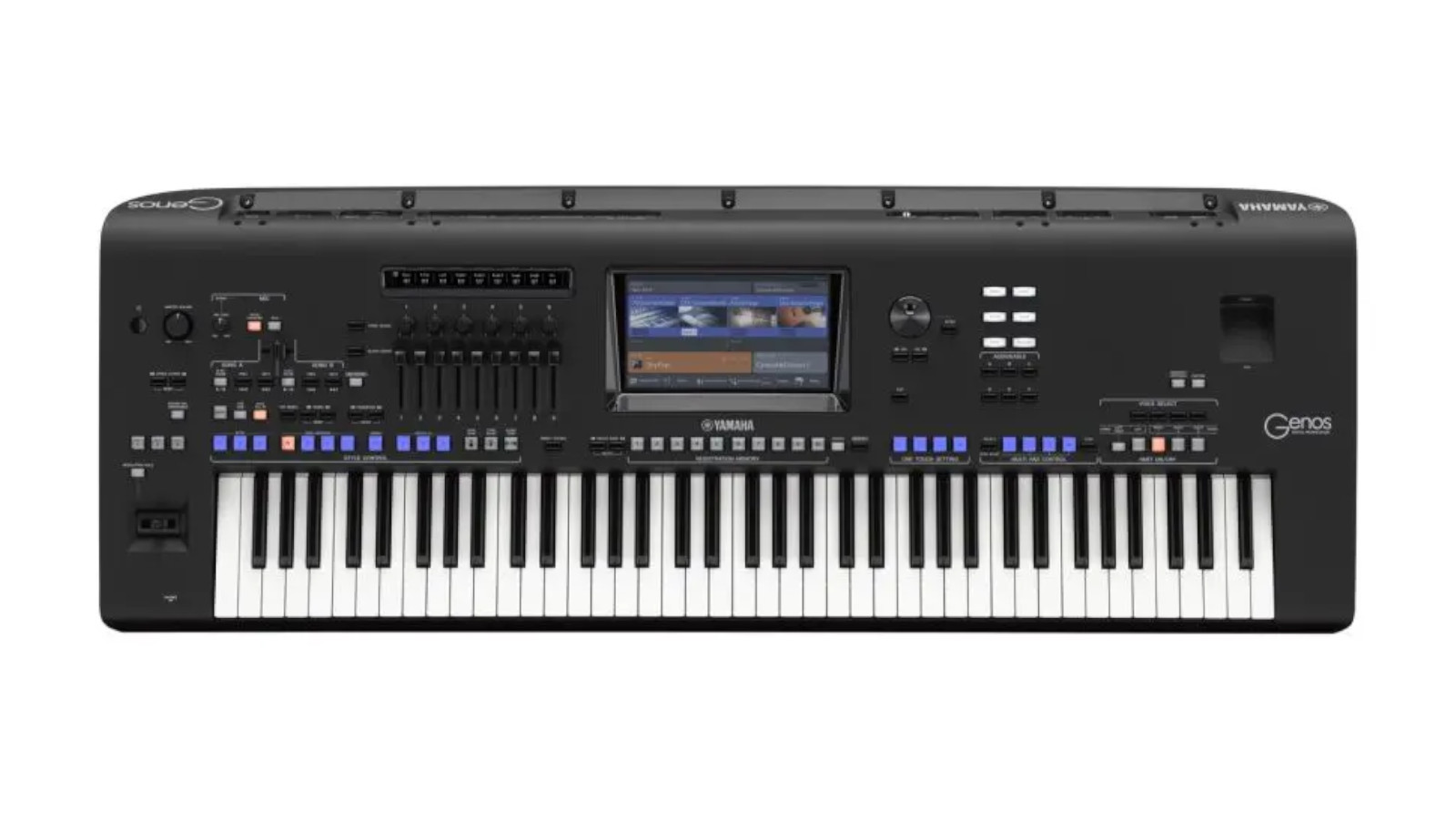
1. Yamaha Genos
Our expert review:
Specifications
Reasons to buy
Reasons to avoid
Widely recognised as the Rolls Royce of arranger keyboards, and successor to the acclaimed Tyros series of instruments, Yamaha’s Genos professional arranger has dominated the upper echelon of the market since its debut in 2017, and is still considered by many to be streets ahead of the competition.
A vast and loyal user community, expandable sound packs and styles, a 128-bar style editor, incredibly realistic super-articulation voices and drum sounds, uber-sophisticated accompaniment arrangements and top-notch digital effects all contribute to the Genos’ well-deserved popularity.
Incredibly fun and inspiring to play, and equipped with Yamaha’s famous CFX grand piano voice, the Genos sounds nothing short of amazing. It really does sound like a full-on band, and the sounds are incredibly realistic. Sadly, all this class and sophistication means that the Genos carries a price tag to match, which is all the more unfortunate when you realise that the speakers – which are mounted externally – are not included in that price.
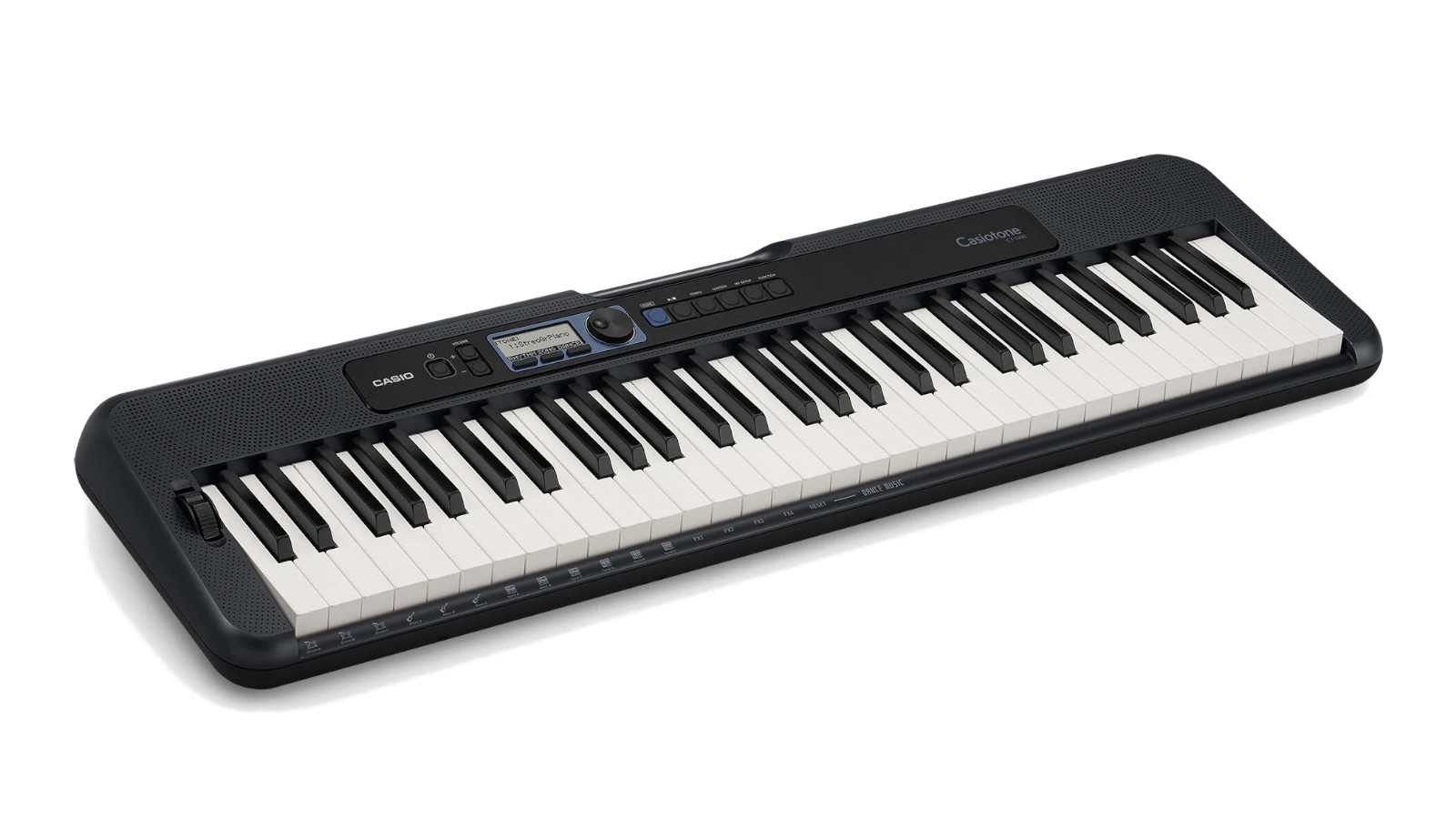
Specifications
Reasons to buy
Reasons to avoid
In 2019, Casio repackaged their CTK range of beginner keyboards into three new Casiotone models – the CT-S100, CT-S200, and CT-S300, designed to be the world’s most portable 61-note arranger keyboards.
Like the S200, the S300 offers a simple control panel with a rotary dial and LCD display, 400 tones, 77 accompaniment styles and a separate Dance Music mode with 50 patterns of its own that can be triggered on the fly in different combinations. Of the three, however, the S300 is the model to shoot for if you want velocity sensitive keys and a pitch bend wheel.
Portability is assured thanks to the S300’s battery-powered capability, super-light weight of 3.3kg and the clever integrated carrying handle that doubles as a slot for the supplied music rest. This makes a great resting spot for an iPad on which to run the compatible Casio Music Space app.
Read the full Casio CT-S300 review
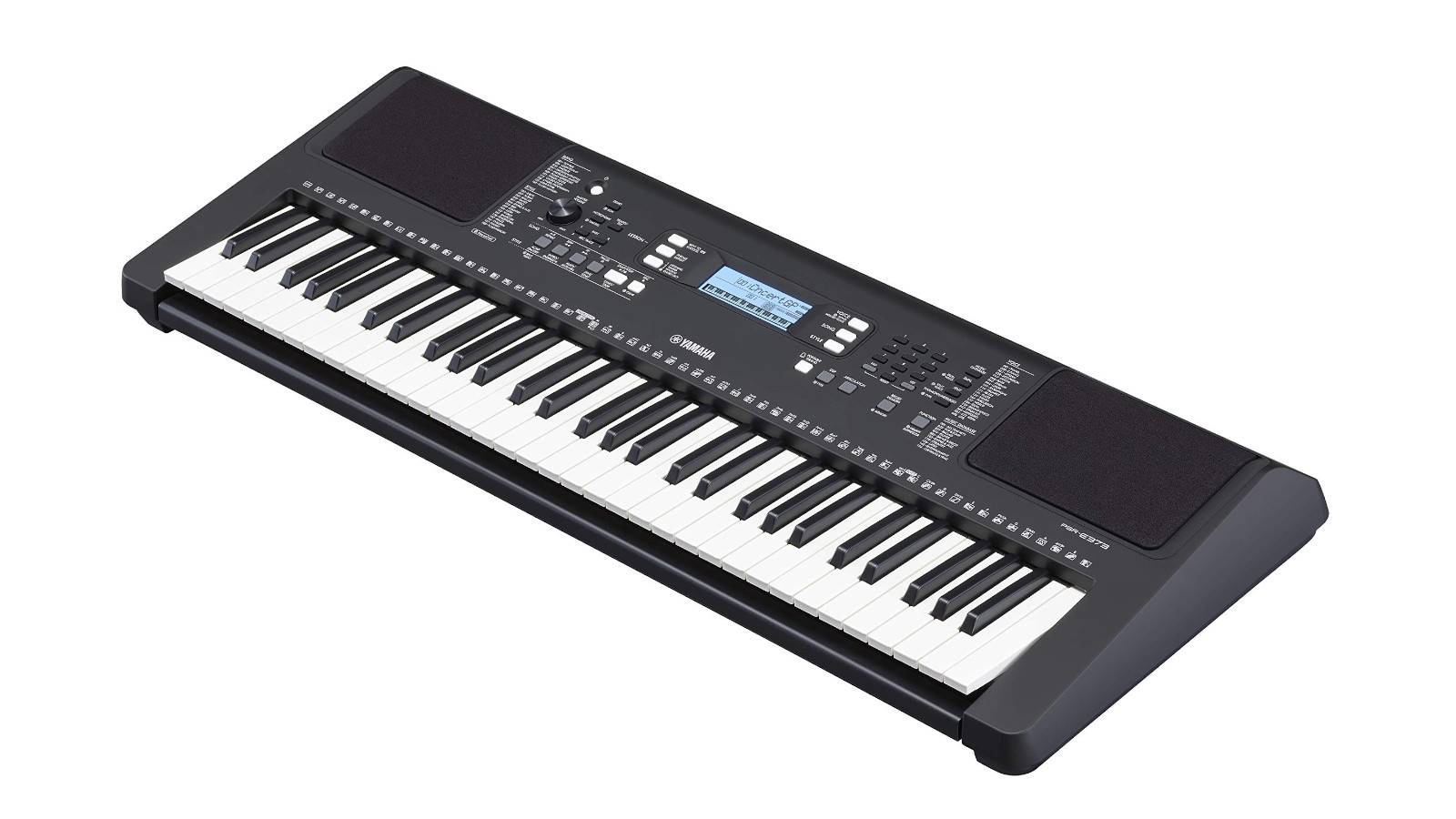
Specifications
Reasons to buy
Reasons to avoid
If you’re looking for a solid and capable arranger keyboard from one of the top three manufacturers that smacks the sweet spot between features and affordability right on the nose, the PSR-E373 from Yamaha is about as good as you’re going to get.
Also known as the YPT-370 in some territories, the PSR-E373 offers 622 voices (including some Super Articulation Lite voices), 205 backing styles, a wonderfully playable velocity sensitive keyboard and, remarkably, a built-in USB audio interface that allows you to transmit audio data between your keyboard and your computer.
You’ll also find an arpeggiator with 150 built-in patterns, a library of 170 popular pre-programmed songs, a melody suppressor function to make it easier to play along with audio tracks fed into the audio input, a "Keys to Success" lesson function and lots more besides. And if 61 keys aren't enough for you, there's also a 76-key version, the PSR-EW310, available for a bit more cash.
Read the full Yamaha PSR-E373 review
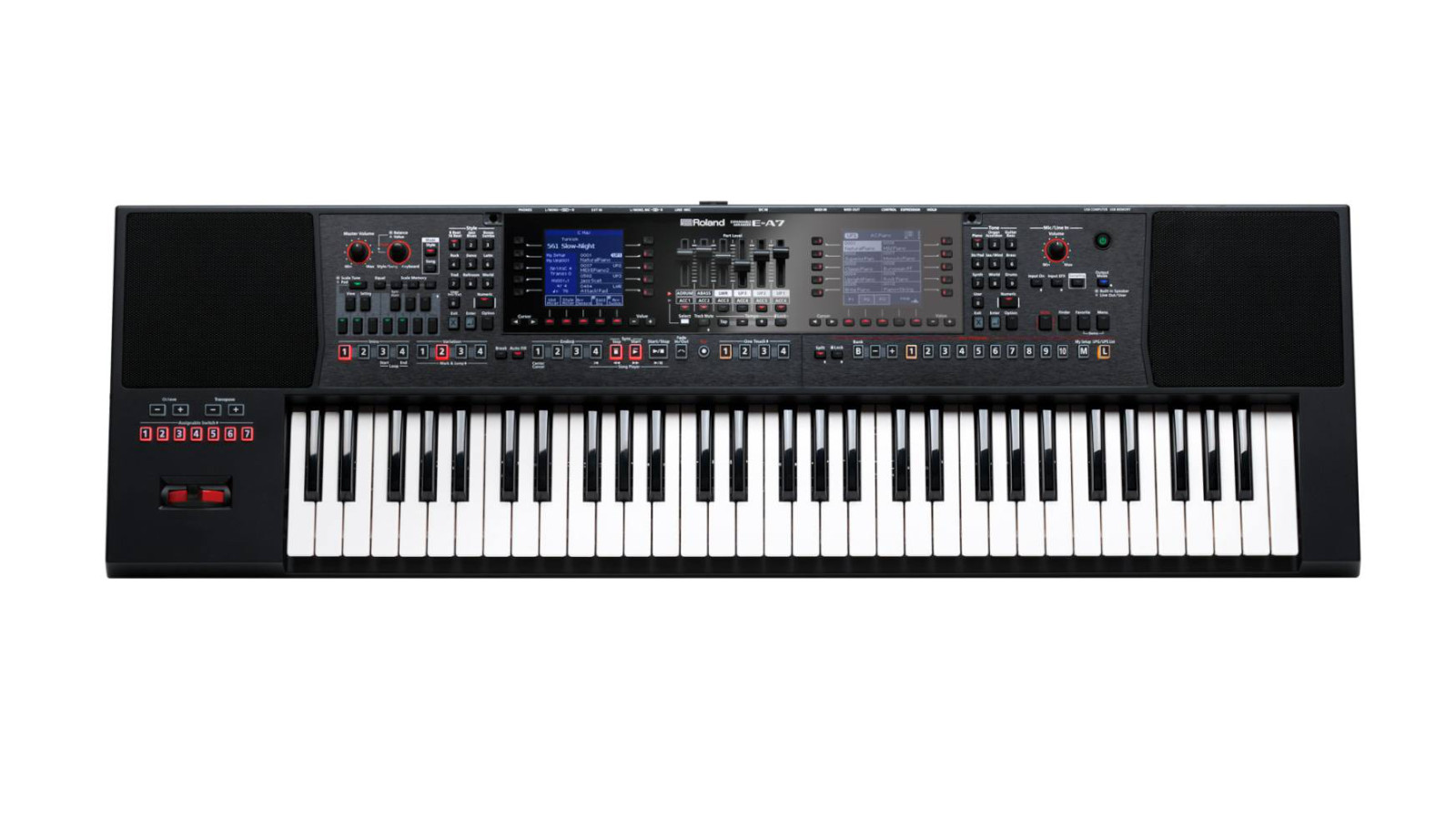
4. Roland E-A7
Our expert review:
Specifications
Reasons to buy
Reasons to avoid
Roland is not generally known for producing arranger keyboards, as it is much more renowned for its professional-grade digital pianos, synths and workstations like the Jupiter X and Fantom series. However the Roland E-A7 arranger keyboard offers a compelling proposition if you’re after a semi-pro arranger from a reputable big-name brand.
With an impressive 1500 high-quality tones, 100 drum kits, and a vast library of over 600 backing styles from Asia, the Middle East, Europe and South America, the E-A7’s sound palette allows you to explore musical genres from across the globe. Thanks to a dual screen layout – the left screen is for styles, the right for sounds – and over 150 single-use buttons to reduce menu-diving, the interface is slick and innovative once you’ve figured out what all the buttons do.
There’s a built-in audio player, WAV file sample import, MIDI file compatibility, and a vocal harmony function, plus you can hook it up to a PC or Mac running Roland’s Tone Manager librarian and editing software to create your own samples, user tones, drum kits and registration set-ups.
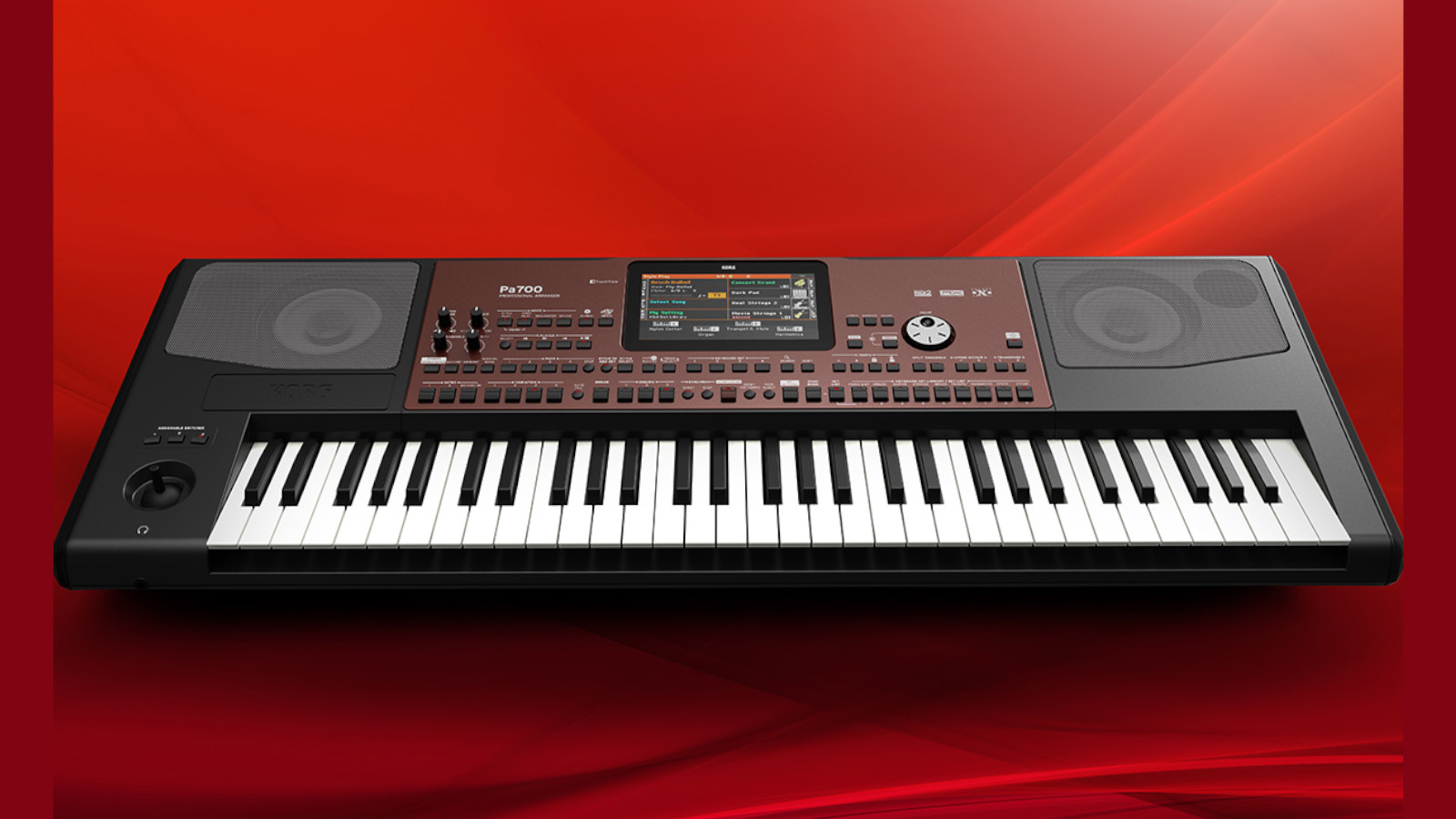
5. Korg Pa700
Our expert review:
Specifications
Reasons to buy
Reasons to avoid
Korg throws its hat into the professional arranger keyboard ring with its acclaimed Pa series, starting with the affordable Pa300 and culminating in the Genos-bothering Pa5x. The mid-price Pa700 (plus the Pa700-OR variant for the oriental market) occupies the centrepoint of the range.
A substantial upgrade from the popular Pa600, the EDS-X (Enhanced Definition Synthesis-eXpanded) sound engine found in the Pa700 offers newer, more realistic sounds – over 1700 in total – and powerful new features, packaged in a slim and professional-looking design with a 7” colour capacitive touchscreen.
As well as providing over 370 preset styles, the Pa700 allows you to convert additional styles from MIDI files. A particular highlight is the 65 KAOSS MIDI effects, controlled via the touchscreen, which are brilliant for on-the-fly performance tweaks, fills and transitions. Two built-in 25W bass reflex speakers, plus inputs for both microphone and guitar, make the Pa700 perfect for small duo gigs.
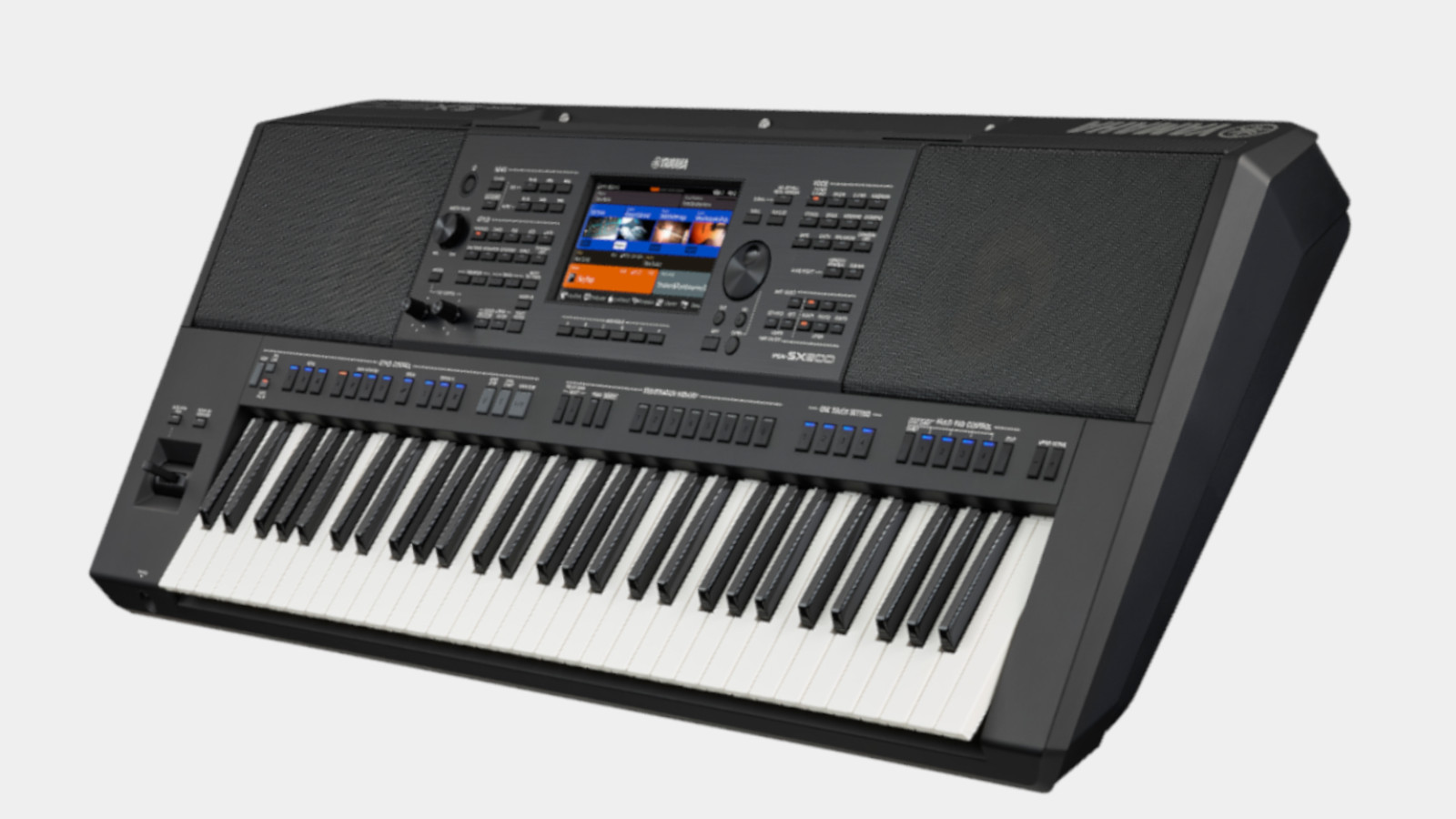
6. Yamaha PSR-SX900
Our expert review:
Specifications
Reasons to buy
Reasons to avoid
Refreshed in 2019 with three new models, Yamaha’s premium range of portable arrangers currently includes the PSR-SX600, PSR-SX700 and this range-topping powerhouse, the PSR-SX900. A whopping 1337 tones and 525 accompaniment styles are included, with more able to be downloaded using the bundled Yamaha Expansion Manager.
The SX900’s upgraded FSB keyboard offers remarkable playability thanks to its heavier initial key resistance and greater key travel, while the onboard Expansive Soundfield Speaker array ensures your performance sounds full and balanced in any environment.
The interface feels familiar, grouping the usual arranger keyboard function buttons around a logically laid-out 7” colour touchscreen, with a pitch bend modulation joystick thrown in on the left hand side. Other highlights include Bluetooth audio, a sub output, a Mic/Guitar input, Vocal Harmony and Synth Vocoder functions, audio recording and much more than we can list here, making the SX900 an exceptional choice for both professional musicians and aspiring performers.
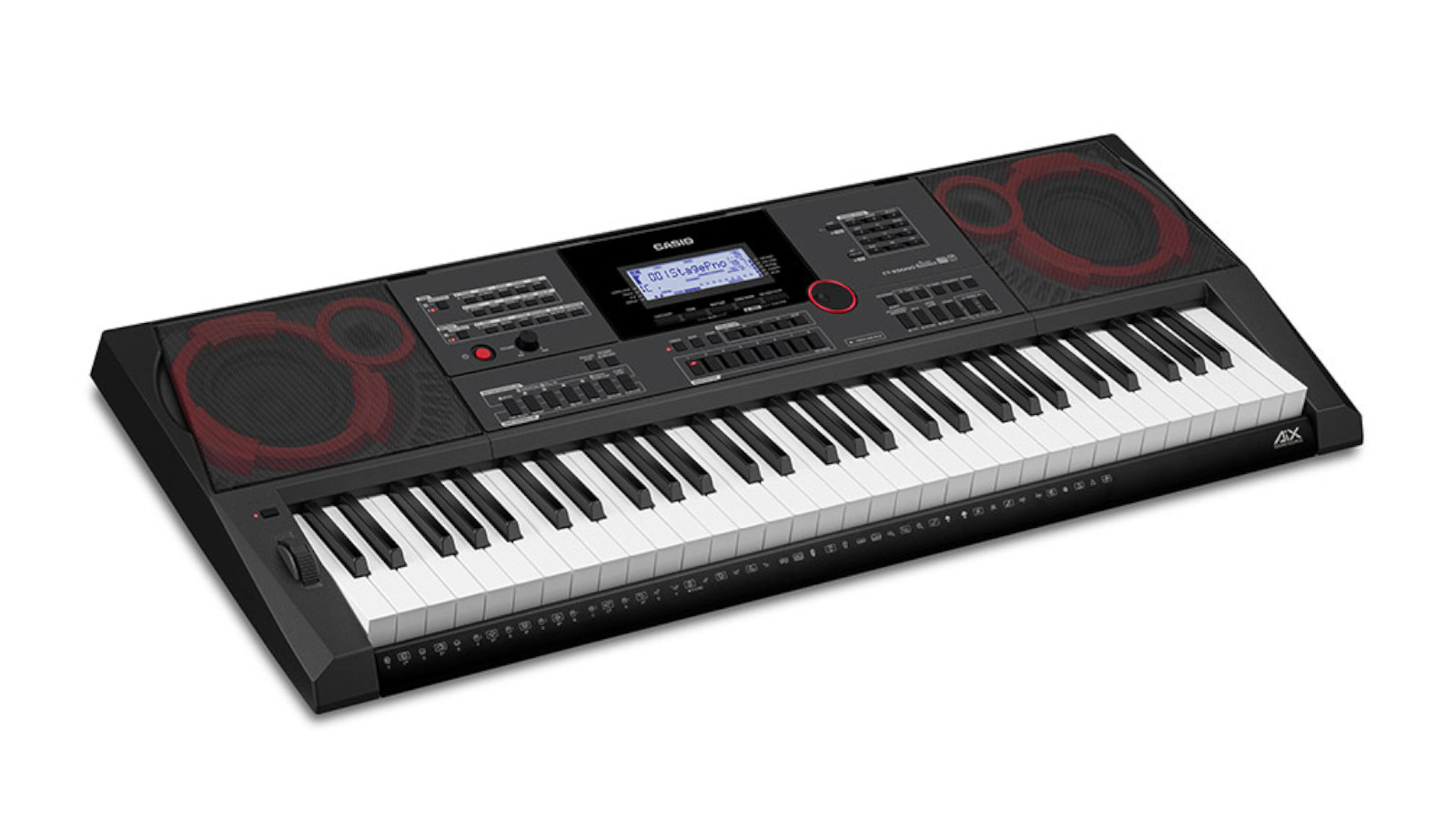
7. Casio CT-X5000
Our expert review:
Specifications
Reasons to buy
Reasons to avoid
Launched in 2018, Casio’s CT-X range was the first line of keyboards to feature the company's renowned AiX (Artistic intelligent Expression) sound engine. The flagship ‘high grade’ CT-X5000 seems more geared up for live performance than the other models in the line-up, thanks to the line outputs and microphone input found on the back panel and the room-filling twin 15W bass reflex speaker system that really complements those great AiX tones.
Boasting a sleek, modern geometric design and crimson accents, the CT-X5000 both looks and sounds the part, with over 800 preset AiX voices on board, 235 rhythm tracks, 100 DSP Effects, USB to Host/Device, 3.5mm Auxiliary Input, microphone input and much more besides.
You can store 128 user settings in the keyboard’s memory, plus get direct access to instrument categories via dedicated category buttons. It also features a 17-track MIDI recorder, arpeggiator and auto-harmoniser, but due to that impressive speaker array, the CT-X5000 is the only model in the CT-X range that’s not capable of running on battery power.

8. Korg Pa5x
Our expert review:
Specifications
Reasons to buy
Reasons to avoid
The Genos-killing Pa5x is the most powerful arranger keyboard that Korg has ever produced, with a large, tiltable colour 8-inch TouchView screen, redesigned EDS-XP (Enhanced Definition Synthesis – Expanded) sound engine and colour-coded interface festooned with enough buttons and sliders to offer an impressive level of control.
Available in three sizes, and with 61 or 76 semi-weighted Fatar action keys and 88 fully-weighted, hammer action keys for the serious pro, each with aftertouch, an aluminium chassis and wooden end cheeks, the Pa5x packs a lot in. There’s over 2,200 tones and 600 styles on offer here, six audio line outputs, a hardware mixer section with nine faders, an HDMI port for an external monitor and an SD card slot for storing performances. You can even play two styles, MIDI files or MP3s, at once, and crossfade between them.
There doesn’t seem to be anything that Korg hasn’t thought of with the Pa5x, except perhaps for the speaker system which, like the Genos, is bespoke and optional. However, if you’re in the market for a seriously professional arranging machine – with a price tag to match – this is without a doubt one of your top options.
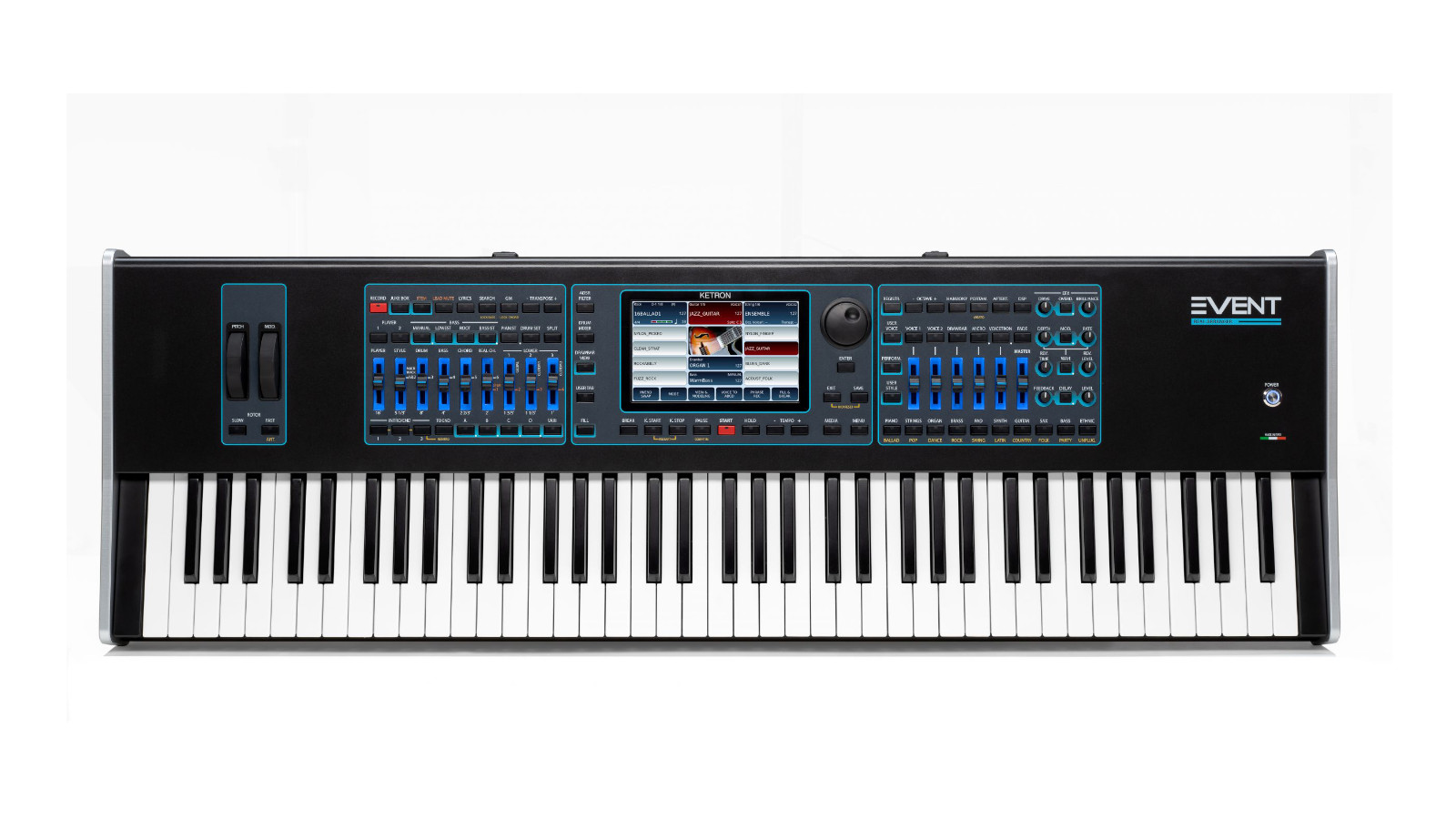
9. Ketron Event
Our expert review:
Specifications
Reasons to buy
Reasons to avoid
Italian manufacturer Ketron isn’t particularly well-known in arranger keyboard circles, but it should be – the company has been producing a range of quality instruments since 1981. The Event is its current biggest and best, a result of its philosophy to produce the best-in-class professional arranger, so has stiff competition in the form of the Yamaha Genos and Korg Pa5x.
The Real Styles on the Event are remarkable for featuring recordings of real drummers, guitarists and bassists integrated as styles in audio format rather than MIDI. For instance, the rhythm section offers over 580 drum patterns recorded live, each with an intro, ending, four variations, fill and break, while the bass section offers a library of 256 real bass guitar lines that were recorded in the studio by real bass players.
Aside from its incredibly realistic sounds, there’s a wealth of other pleasantly pro details too. The HDMI output allows you to connect an external touchscreen, which can be used to control the keyboard and display lyrics at the same time. There’s also full wireless capabilities, including wi-fi for syncing with the Ketron app and Bluetooth for audio streaming from smartphones and tablets.
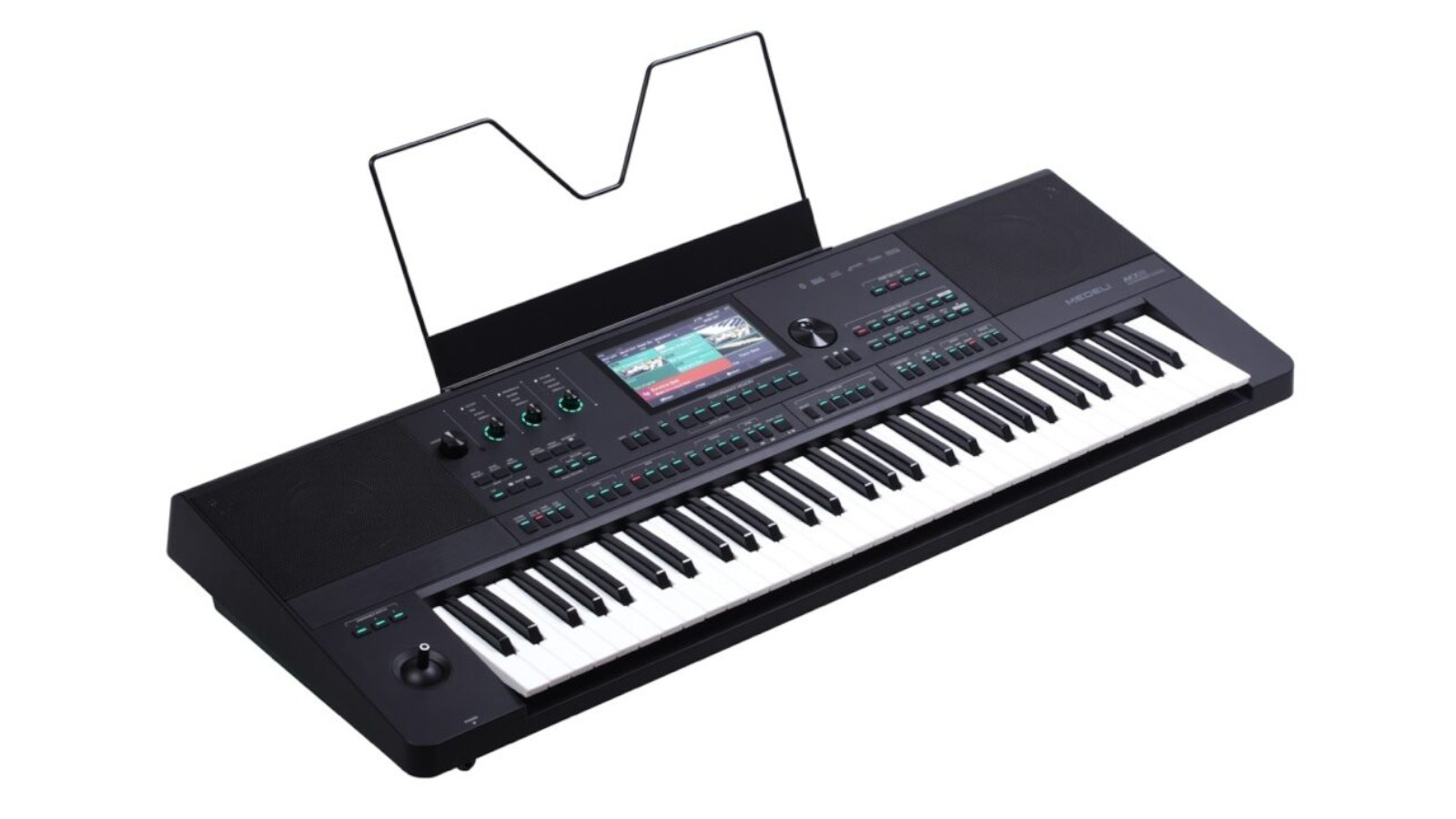
10. Medeli AK-X10 / Thomann AK-X1100
Our expert review:
Specifications
Reasons to buy
Reasons to avoid
If your quest for the perfect arranger keyboard is open to including something a little bit different from the big four manufacturers, you could do a lot worse than the Chinese-made Medeli AK-X10. Produced by the parent company that makes the incredible ASM Hydrasynth synthesizer and offering extraordinary value for money, the AK-X10 sits in the mid-premium price bracket, retailing at around £650 at the time of writing.
In terms of features, the AK-X10 has a similar spec to the much pricier Yamaha PSR-SX900, with 1100 remarkably lifelike premium sounds, 280 brilliantly-arranged accompaniment styles, a wonderfully playable keyboard, Bluetooth MIDI and audio and enough DSP effects and connectivity to keep even a professional player more than happy.
With all this, plus a logical button layout centred around a 7” colour TFT touchscreen display, a built-in audio recorder and an illuminated four-way pitch and modulation joystick, for sheer bang-for-buck, the AK-X10 is hard to beat. If you’re in Europe, Thomann has their own branded clone of the AK-X10, the AK-X1100.
Best arranger keyboards: Buying advice

What is an arranger keyboard?
An arranger keyboard is a type of electronic keyboard that allows you to perform as a true ‘one-man band’ by supplying automatically-generated backing accompaniment parts such as drums, basslines and chords for you to play along with. Normally, you control these backing parts by shaping chords with your left hand for the virtual band to follow along with, while you play the song’s melody part with your right hand. Most arrangers will have options for triggering chords either with a single finger or by playing the full chord.
Great for home hobbyists and solo cover performers, modern arrangers are portable, often battery-powered instruments that usually feature a 61-key keyboard and built-in speakers. Arranger keyboards are not synthesizers though – although they usually include their fair share of electronic synth and lead sounds, sound editing functions are usually quite limited. Instead, arrangers tend to also offer lifelike renditions of traditional acoustic instruments like trumpets, saxophones, guitars and strings, in order to provide a well-rounded palette of sounds covering all musical genres.
What makes an arranger different to a workstation keyboard?
But what makes an arranger different from a workstation keyboard? In many areas, the functionalities of these two types of keyboards cross over – masses of preset sounds and the ability to compose, record and perform complete songs with full arrangements are two of the most obvious things they have in common. The difference though is that arranger keyboards tend to include auto-accompaniment features that workstations don’t necessarily offer, and as such tend to be aimed more at the domestic, beginner and hobbyist end of the market.
With a workstation, the focus tends to be more on gigging, composing, sequencing and recording your own songs, using built-in multi-track sequencers, audio recording and editing features and digital effects to finalise recordings without a computer-based DAW. Another big difference is that arranger keyboards tend to have built-in speakers, while workstations usually eschew these in favour of line outputs for plugging into PA systems.
What to look out for when buying an arranger keyboard
MusicRadar's got your back
Keys / Action
With any keyboard, the keys themselves should be inspiring to play, and even though a large portion of arranger keyboard users are likely to be beginners, the action – the way the keys respond to your fingers – still needs to be of a good standard. The minimum size for an arranger keyboard is 49 keys, but most of the instruments on this list have 61 keys, a span of five octaves that should comfortably allow for two-handed playing. All the arrangers on this list are velocity-sensitive, allowing for dynamic expression according to how hard you play the keys.
Like most things, the more money you shell out, the higher quality keyboard action you’re likely to end up with, but with the big four brands – Yamaha, Roland, Casio or Korg – you’re unlikely to be disappointed by any of the keyboards featured on their arrangers.
Sounds
With a sizeable focus on traditional acoustic instrument sounds, arranger keyboards are usually filled with preset tones that you can’t generally edit in the same way that you can modify the sounds on a synthesizer. You can usually combine and layer sounds into sound sets and edit the type of effects applied, but things like changing filter cutoff, editing waveforms and setting up modulation routings are usually more the preserve of synthesizer workstations than arrangers. The number of onboard tones can be anywhere from 200 to 1,200 depending on the price bracket, and these are generally categorised by instrument type, e.g. piano, strings, brass, guitar, woodwind etc.
Auto Accompaniment
A key feature of any arranger keyboard is the auto-accompaniment function – the virtual backing band that plays along with you as you pick out the melody. These are usually made up of pre-programmed parts grouped together in sets called styles, which are categorised by genre. These can include categories like Rock, Folk, Dance, Waltz, Samba, Funk and so on, and these days are often extremely accomplished.
Each style will usually have its own intro, endings and fills, plus a couple of variations of the main pattern that can be triggered on the fly to add some variety to your arrangements. The number of built-in accompaniment styles can range from around 50 to 600, with the average number for a mid-priced arranger being around 250-300.
Speakers
Ideally, your arranger keyboard will have a pair of built-in speakers so you can just set up anywhere and serenade your audience without the need to connect to any external hardware. In terms of power, smaller keyboards often feature a speaker wattage of around the 2W mark, extending up to twin 25W set-ups for some of the more powerful instruments on the list. Interestingly, the ultra-pro, most expensive flagship arrangers seem to abandon built-in speakers altogether. Presumably the assumption here is that if you can blow 3-4K on a keyboard, you’re at a level where you’ll mostly be gigging with a PA system, although it goes without saying that all the keyboards on this list also feature at least one headphone output for silent practice.
Performance Recorder
More commonly found on workstations, multi-track sequencers are often absent from arranger keyboards, which usually opt instead for onboard performance recorders. These can record your playing either as MIDi or audio files, either to the keyboard's internal memory or sometimes to a connected USB stick or SD card. Complexity and breadth of editing features will obviously vary according to price, but you’ll usually find at least a basic 2-track song recorder on most arrangers.
How we choose the best arranger keyboards for this guide
Here at MusicRadar, we are experts in our field, with many years of playing, creating and product testing between us. We live and breathe everything music gear related, and we draw on this knowledge and experience of using products in live, recording and rehearsal scenarios when selecting the products for our guides.
When choosing what we believe to be the best arranger keyboards available right now, we combine our hands-on experience, user reviews and testimonies and engage in lengthy discussions with our editorial colleagues to reach a consensus about the top products in any given category.
First and foremost, we are musicians, and we want other players to find the right product for them. So we take into careful consideration everything from budget to feature set, ease of use and durability to come up with a list of what we can safely say are the best arranger keyboards on the market right now.
Find out more about how we test music gear and services at MusicRadar.
Related buyer's guides
- Best digital pianos for beginners: start playing today
- Best stage pianos: the finest keyboards for live performance
- Best keyboard stands: top picks for home and stage use
- Best keyboard amps: hear yourself loud and clear
- Best piano benches: piano stools for all budgets
Want all the hottest music and gear news, reviews, deals, features and more, direct to your inbox? Sign up here.
Dave has been making music with computers since 1988 and his engineering, programming and keyboard-playing has featured on recordings by artists including George Michael, Kylie and Gary Barlow. A music technology writer since 2007, he’s Computer Music’s long-serving songwriting and music theory columnist, iCreate magazine’s resident Logic Pro expert and a regular contributor to MusicRadar and Attack Magazine. He also lectures on synthesis at Leeds Conservatoire of Music and is the author of Avid Pro Tools Basics.
